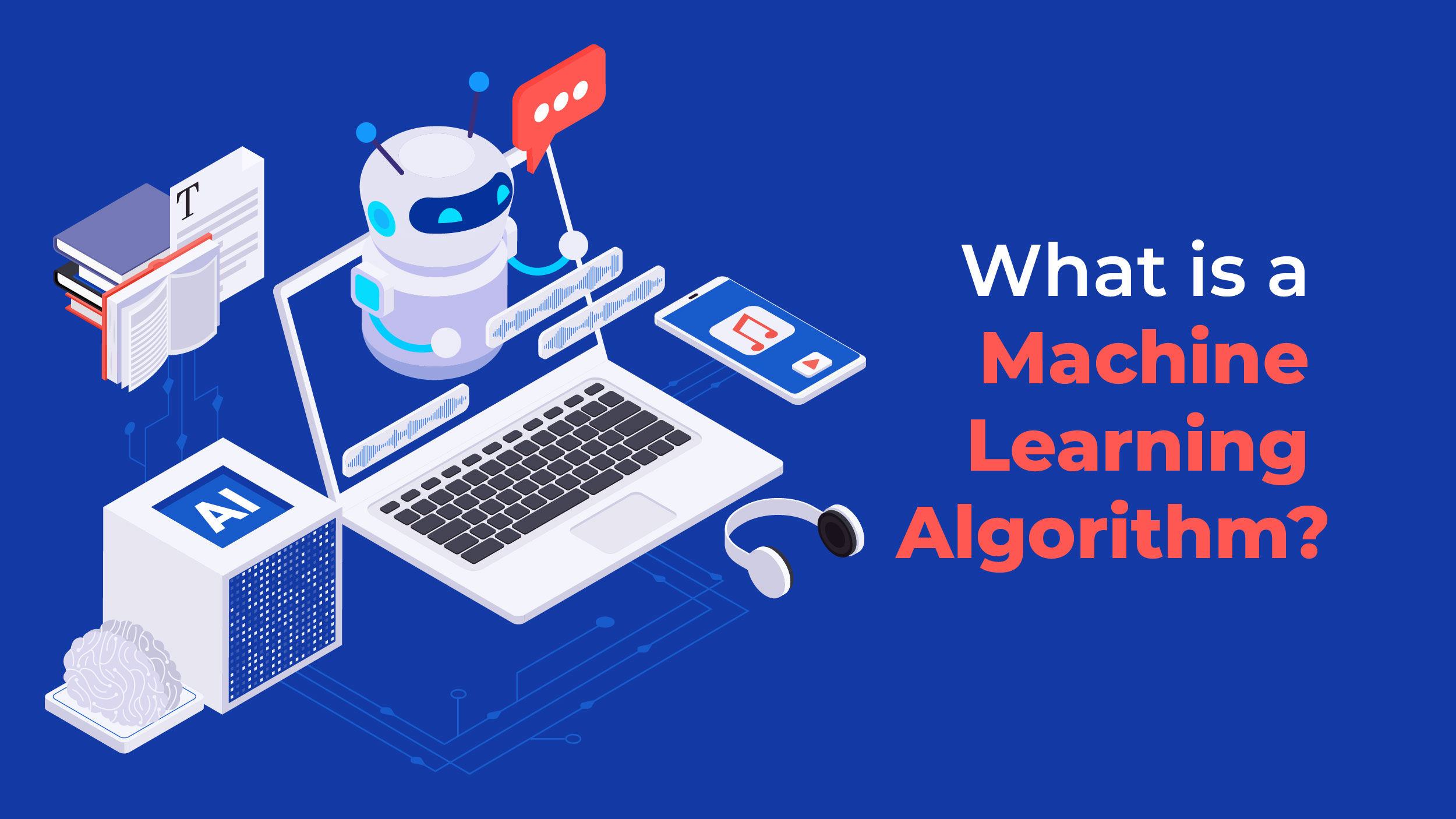Picture this: You’re in a tight spot, urgently needing an answer, but no matter how much you search, you can’t find the exact solution you need. Frustrating, right? Now, what if the system adapted, learned from different sources, and not only provided an answer, but the perfect one, precisely when you need it? Pretty awesome, huh? That’s exactly how machine learning algorithms work!
Without further ado, let’s dive in and learn all about it.
What is a Machine Learning Algorithm?
 Algorithms for machine learning (ML) are computational processes or methods that let computers or other devices learn from information, detect trends, forecast the future, or act on it without having to be explicitly programmed.
Algorithms for machine learning (ML) are computational processes or methods that let computers or other devices learn from information, detect trends, forecast the future, or act on it without having to be explicitly programmed.
These algorithms are a key element of machine learning, a subfield of computer science and artificial intelligence (AI).
For the purpose of gaining insightful knowledge, identifying patterns, and formulating predictions or judgments, ML algorithms evaluate and process enormous volumes of data. These include supervised learning, unsupervised learning, semi-supervised learning, reinforcement learning, and deep learning.
Recently, Netflix was able to save $1 billion using its machine learning algorithm for personalization and content recommendations.
With the machine learning algorithms explained, now let’s explore its types.
What are the types of Machine Learning Algorithms?
 Using labeled training data, where the input data and appropriate output labels are provided, supervised learning algorithms can learn new information. These algorithms process the labeled data to correctly forecast or categorize brand-new, untainted data.
Using labeled training data, where the input data and appropriate output labels are provided, supervised learning algorithms can learn new information. These algorithms process the labeled data to correctly forecast or categorize brand-new, untainted data.
- Unsupervised learning algorithms examine unlabeled data to identify hidden relationships, structures, or patterns without the use of fixed output labels. These methods aid in the identification of data anomalies, correlations, or clusters. Unsupervised learning is further classified into two types: clustering and association.
- Supervised learning methods are an ML algorithm wherein the system requires external supervision in order to learn. The dataset that is labeled is extensively used to train the supervised learning models. After training and processing, the model is put to the test by being given a sample set of test data to see if it can accurately predict the desired result. Supervised learning is further classified on the basis of the problem into Classification and Regression.
- Reinforcement learning methods train an agent to respond in a way that will maximize rewards or lower punishments. The algorithm gains knowledge by making mistakes and then learning from them by getting praise or incentives.
- Deep learning algorithms are a category of ML algorithms that learn and extract complicated patterns or representations from data using artificial neural networks with numerous layers. When it comes to tasks like speech recognition, natural language processing, and image recognition, these algorithms have proved to be surprisingly effective.
ML algorithms are the fundamental building blocks that allow computers to learn from data and make defensible judgments or predictions. They have uses in a variety of industries, from marketing and self-driving cars to healthcare and finance.
How Do Machine Learning Algorithms Work?
When drawing predictions, classifications, or taking actions, machine learning algorithms use data to identify patterns and relationships. The algorithm’s specific operations vary depending on its nature and the problem it attempts to answer. According to Nature, ML algorithms were used to predict the mortality of COVID-19 patients with 92% accuracy. Breast cancer can be identified with 99% accuracy by Google’s Deep Learning ML software.
Here’s the complete machine learning algorithms cheat sheet you need:
- Data Gathering: For the machine learning activity, relevant information is gathered and prepared. For supervised learning, these data may consist of features (input variables) and labels (output variables), or unlabeled data for unsupervised learning.
- Data Preprocessing: The gathered data is cleaned, converted, and preprocessed to guarantee its quality and compliance with the algorithm. This stage might involve deleting duplicates, dealing with missing values, scalability of features, or categorical variable encoding.
- Training Phase: In supervised learning, the algorithm learns to map the input features to the matching output labels by training on labeled data. Utilizing optimization techniques, the program modifies its internal parameters or model during training to reduce the discrepancy between expected and real labels.
- Evaluation: Post training, the algorithm is assessed using a different dataset known as the test set. This assessment gauges how well the algorithm performs and how well it can categorize or make predictions based on brand-new data.
- Model Deployment: If the algorithm performs satisfactorily, it can be applied to new, real-world data to make predictions or assign categories. This can entail incorporating the model into a program or system so that it can communicate with users or offer information.
- Iterative Improvement: ML algorithms can be improved regularly by adding more data, retraining the model, adjusting hyperparameters, or utilizing more complex methods like deep learning or ensemble learning.
It’s crucial to remember that various machine learning techniques, including decision trees, support vector machines, neural networks, and clustering algorithms, each have unique underlying principles and algorithms. Depending on the characteristics of the problem at hand and the data at hand, each algorithm has its advantages, disadvantages, and best uses.
Additionally, the suitability and representativeness of the training data, the selection of relevant features, and the careful choice of algorithmic parameters are all pivotal for the success of ML algorithms.
Winding Up
The way we tackle complicated problems and make predictions across a variety of fields has been completely transformed by machine learning algorithms. These algorithms are able to spot patterns, learn from data, and generate precise predictions or classifications. The performance of ML algorithms can be enhanced continuously through the iterative process of training, evaluating, and refining.
Many industries, such as healthcare, finance, marketing, and robotics, have effectively used ML algorithms. They have the ability to boost decision-making processes, automate procedures, and extract hidden insights from massive datasets. ML algorithms have the potential to revolutionize industries and enhance our daily lives by doing everything from forecasting the impact of diseases to making personalized product recommendations.
That being said, it’s crucial to understand that ML algorithms are not flawless. They are only as good as the training data and feature sets that they are fed. Predictions may be inaccurate or prejudiced if the training data contains biases or mistakes. Therefore, to guarantee the accuracy and fairness of machine learning algorithms, thorough data collection, preprocessing, and model validation are essential.
































